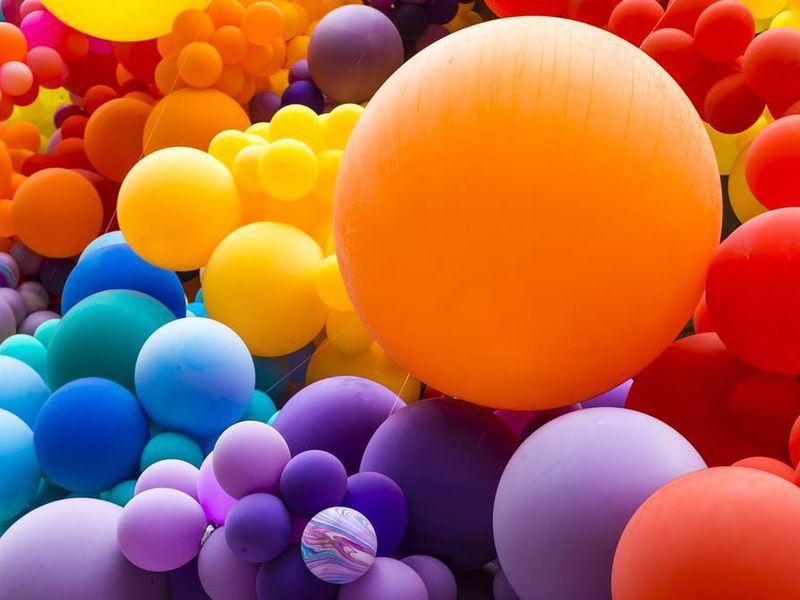Color is wonderful stuff! See below for dozens of books, color science and math, color poetry, color projects, and more. Take the Stroop Test, learn about Isaac Newton and rainbows, and find out why pink wasn’t always for girls.
Table of Contents
Color for Beginners
ROY G BIV is the kicky little mnemonic that helps us remember, in order, the colors of the visible spectrum: Red, Orange, Yellow, Green, Blue, Indigo, and Violet. According to most public-school curricula, kids should be able to name and identify the colors by the time they get out of kindergarten (both primary and secondary colors, plus brown, black, white, and gray) and there are hundreds – literally, hundreds – of books do help them do so.
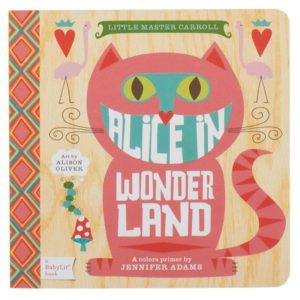
|
By Jennifer Adams and Alison Oliver, Babylit’s Alice in Wonderland (Gibbs Smith, 2014) is a “colors primer” with a Wonderland theme, featuring a white rabbit, a blue caterpillar, a yellow teapot, and a lot of red hearts. For ages 1-4. |
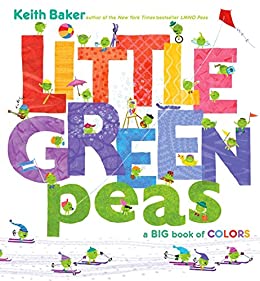 |
In Keith Baker’s Little Green Peas (Little Simon, 2016) – subtitle “a BIG book of COLORS” – the little green peas sail blue boats, fly red kites, ski down purple mountains, and more. For ages 2-5. |
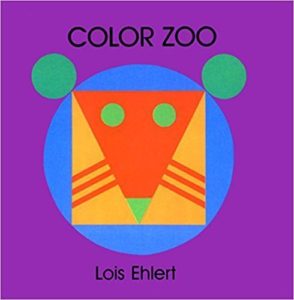
|
Lois Ehlert’s visually appealing Color Farm (HarperCollins, 1990) and Color Zoo (HarperCollins, 1989) pack a triple whammy, combining animals, colors, and geometric shapes. Kids discover lions, tigers, monkeys, pigs, cows, and chickens, variously pieced together from blue circles, orange squares, red triangles, and the like. For ages 2-6. |
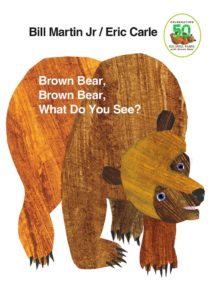 |
Bill Martin’s Brown Bear, Brown Bear, What Do You See? (Henry Holt, 1992) – a wonderful rhyming classic – is a picture-book tour of brilliantly colored paper-collage animals, including, along with the title’s brown bear, a blue horse, green frog, purple cat, and bright-yellow duck. For ages 2-6. |
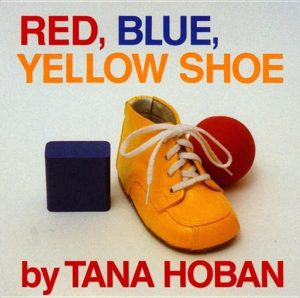
|
Tana Hoban, known for her award-winning wordless picture books illustrated with full-page photographs, has published several with color themes, among them Of Colors and Things (Greenwillow, 1996), Is It Red? Is It Yellow? Is It Blue?: An Adventure in Color (William Morrow, 1987), and Colors Everywhere (Greenwillow, 1995). This last – a collection of glowing scenes of striped umbrellas, flower gardens, autumn leaves, and birds – includes bar graphs on each page showing the proportions of the different colors present in the photographs. For ages 2-6. |
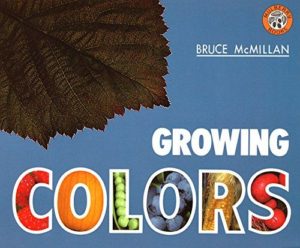
|
Bruce McMillan’s Growing Colors (Mulberry Books, 1994) is set in the garden, where readers find colors in luscious photographs of green peas, yellow corn, purple beans, and red raspberries. For ages 2-6. |
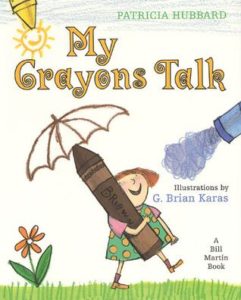 |
In Patricia Hubbard’s My Crayons Talk (Henry Holt, 1999), a little girl discovers colors through a very vocal box of talking crayons (Brown shouts “Play! Mudpie day!”). For ages 3-7. |
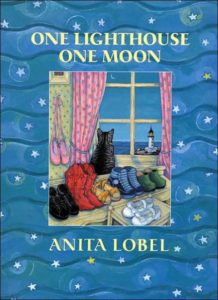 |
Anita Lobel’s One Lighthouse, One Moon (Greenwillow, 2002) is an enchanting multifaceted introduction to colors, numbers (1-10), the days of the week, the seasons, and the months of the year. Colors are paired with the days of the week, as a little girl dons different-colored footgear for each day’s activity: green gardening clogs, red cowboy boots, yellow beach sandals, pink ballet slippers. For ages 4-7. |
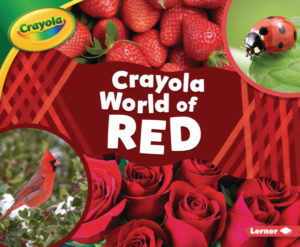 |
By Mari Schuh, the Crayola World of Color series (Lerner, 2019), includes World of Blue, Red, Green, Orange, Yellow, and Purple, each filled with colorful photos. Included in each is a short color glossary. For ages 4-8. |
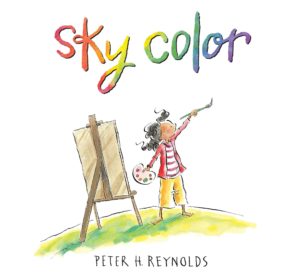
|
In Peter Reynolds’s Sky Color (Candlewick, 2013), art-loving Marisol is thrilled to be making a mural for the library – but there’s no blue paint. How to make a sky with no blue paint? Then she realizes that there’s far more to the sky than blue: there are all the colors of sunrises, sunsets, and swirling stars. For ages 4-8. |
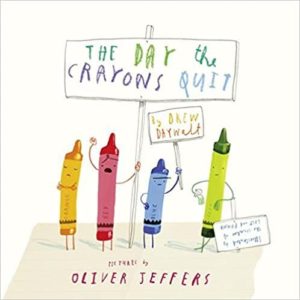 |
In Drew Daywalt’s hilarious The Day the Crayons Quit (Philomel Books, 2013), when Duncan opens his box of crayons he finds nothing but disgruntled letters. Beige feels underappreciated (everybody likes Brown better); Black is sick of being used for nothing but outlining; Blue is exhausted from constantly coloring huge expanses of sky and sea. Orange and Yellow are fighting over the color of the sun; and Peach, whose wrapper has been torn off, is naked and in hiding. Duncan comes up with an artistic solution that makes everybody happy. For ages 4-8. |
| The Day the Crayons Quit is a color-illustrated Reading Is Fundamental guide for parents and educators with extension suggestions, multidisciplinary activities, a vocabulary list, and technology links. |
For Older Readers
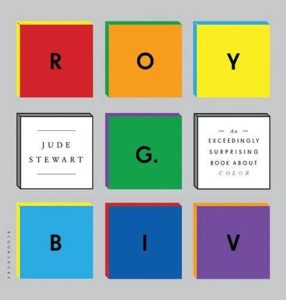 |
Jude Stewart’s Roy G Biv (Adams Media, 2013) is a cleverly designed story of color, filled with factoids, myths, quotations, and historical snippets on all the colors of the rainbow. For teens and adults. |
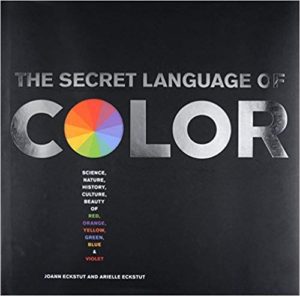
|
Joann Eckstut’s The Secret Language of Color (Black Dog & Leventhal, 2013) is a lushly illustrated history and science of color. Readers learn – among much else – why grass is green and flamingos are pink, where yellow journalism comes from, and why doctors wear green scrubs. For teens and adults. |
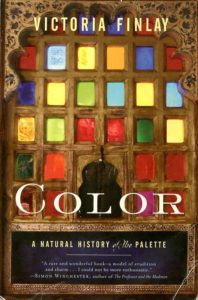 |
Victoria Finlay’s Color: A Natural History of the Palette (Random House, 2007) is a fascinating exploration of pigments worldwide, filled with intriguing info. Learn all about logwood, saffron, indigo, and lapis lazuli. For tees and adults. |
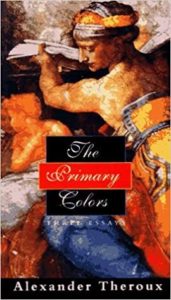 |
Alexander Theroux’s The Primary Colors and The Secondary Colors (Henry Holt, 1996) are two essay collections, both fascinating compilations of everything (everything!) having to do with red, blue, yellow, orange, purple, or green. Try a color essay of your own! For teenagers and adults. |
| From the Stanford Encyclopedia of Philosophy, see Color for philosophers. Color is a lot more complicated than you might think. | |
| For more resources, see Philosophy. | |
| Color Matters is a website devoted to all aspects of color, including color symbolism, color psychology, color vision, and the science of color, plus lists of color resources. For younger visitors, there’s a kids’ page and fun color facts. | |
| From the Tech Museum, Make a Splash with Color covers a wide range of color topics, including color science, color vision, hue, brightness, and saturation, and more. | |
| Color Theory for Art and Design covers Color as Symbol, Color as Light, Color as Emotion, and Color Terms, and ends up with a Color Quiz. |
